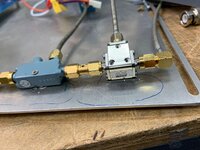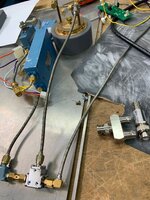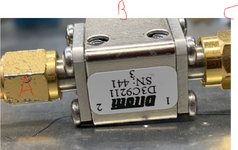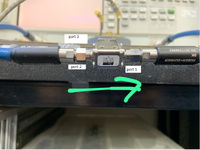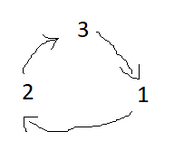yefj
Advanced Member level 4
Hello , i have the following system which get a feedback from oscillator from circulator.
As you can see in the lab photos i put power to port A and i need to get the dip in power at port C.
The power input which comes from A and goes into B while the feedback from the resonator is from port C.
looking at the circulator component i have ports 1 2 3 .
currently its works good i put power to port 2 and i see the "DIP" from port 3 at some frequency range exactly as shown in the article and the attached diagram.
but when i flip ports 2 and 1 i dont see such dip response from port 3
i dont understand few things:
1.why do we inject power to port 2 and not port 1?
Its like a flipped polarity. if i switch the ports and i dont get any dip like as i see when i put power threw port 2.
looking at the diagram from wikipedia why do i see a good dip frequency response from port 2
Thanks.




As you can see in the lab photos i put power to port A and i need to get the dip in power at port C.
The power input which comes from A and goes into B while the feedback from the resonator is from port C.
looking at the circulator component i have ports 1 2 3 .
currently its works good i put power to port 2 and i see the "DIP" from port 3 at some frequency range exactly as shown in the article and the attached diagram.
but when i flip ports 2 and 1 i dont see such dip response from port 3
i dont understand few things:
1.why do we inject power to port 2 and not port 1?
Its like a flipped polarity. if i switch the ports and i dont get any dip like as i see when i put power threw port 2.
looking at the diagram from wikipedia why do i see a good dip frequency response from port 2
Thanks.
